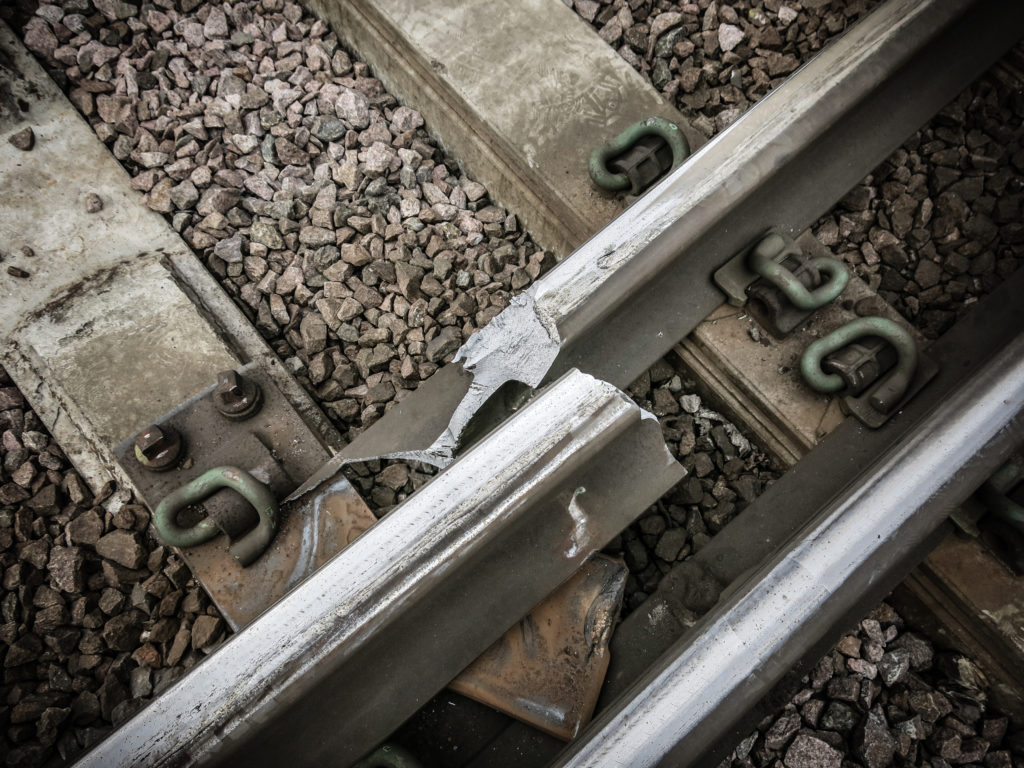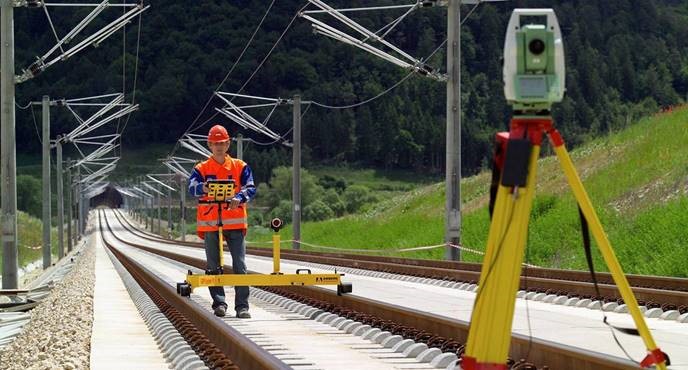The renewed emphasis on infrastructure, including multitrillion-dollar spending proposals, is bringing the state of the nation’s railroads, roads and transit systems — and their opportunities for improvement — into focus.
While much of the focus has been on the nation’s highways and bridges, railroads and public transit systems are also under the microscope.
According to the American Society of Civil Engineers (ASCE), the nation’s rail network received a B grade on its Infrastructure Report Card. Digging deeper shows it is really a mixed bag.
Although freight railroads invest $260,000 per mile, passenger networks nationwide have at least a $45.2 billion state-of-good-repair backlog.
Transit, however, is ripe with opportunities, receiving a grade of D-, ranking lower than the nation’s road network. Clearly, there is room for improvement.
“Over a 10-year period across the country, 19% of transit vehicles, and 6% of fixed guideway elements like tracks and tunnels were rated in ‘poor’ condition,” ASCE noted in its report. “Currently, there is a $176 billion transit backlog, a deficit that is expected to grow to more than $270 billion through 2029.
“Failure to address the transit revenue shortfall will only exacerbate ridership declines as service cuts mean that trip delays and reliability issues become more frequent,” according to the report. “This stands to increase congestion, hamper the economy, and worsen air quality in the coming years.”
Why track optimization?
Whether it’s hauling freight across the continent or commuters across the city, a railroad is only as good as its tracks.
According to the U.S. Department of Transportation’s Bureau of Transportation Statistics, there are more than 11,000 miles of transit track. And of the 65 rail transit systems, seven Class I, 22 regional and 584 local/short line railroads nationwide, all need track optimization.
Railroad tracks move over time as the Earth and tracks’ ballast shifts, meaning that a railroad’s right-of-way looks different today than it did when it was first constructed. When it comes to making repairs in the right-of-way, railroad companies and transit systems cannot simply rely on their original plans; they need an up-to-date view of the line as it exists today.
Track optimization starts by having as-built survey data to look at a system holistically, enabling railroads and transit systems to prioritize sections of tracks for surfacing and tamping.

Tracks are under incredible pressure, bowing beneath the weight of passing trains. The systems must be continually monitored and repaired to remain safe and in top working order.
Whether it’s freight, commuter, passenger or transit, track optimization is the basis for safe operations and is critical to maintaining a “State of Good Repair.”
Optimizing tracks is critical to operational efficiency. Doing so allows railroads to run their trains and transit vehicles at top speeds and avoid unnecessary slow zones, thereby reducing lost revenue from delayed trains.
Properly optimizing tracks can help railroads and transit systems save money, reduce the number of derailments, and lower the number of significant infrastructure projects they may need to undertake.
The opportunity
Despite the benefits, the rail industry is underserved when it comes to tack optimization as there are too few companies that offer track optimizing services.
This is surprising given the amount of research focused on helping the rail industry derive meaningful information from Big Data. In fact, a summary of the 2020 “Big Data in Railroad Maintenance Planning” conference indicates that researchers are successfully developing AI models to not only predict broken rails but also identify problematic track geometry before it becomes critically hazardous.
Recent infrastructure bills, including the American Rescue Plan — to some degree — and the proposed American Jobs Plan, may send trillions of dollars toward infrastructure renewal.

And with the current state of good repair backlog at $45.2B, there is clearly an opportunity for companies providing track optimization and design services to reap benefits from the stimulus funding. However, because of the dearth of companies in the country that offer these services, many railroads and transit agencies are turning to alternate sources for help with their optimization needs.
In recent years, new transit systems have either been built or expanded, including ones in Milwaukee, Kansas City and Detroit. Nationally, the number of light rail track miles has more than doubled since 2003.
With new dollars headed their way, these systems may continue to grow, despite a momentary decline in transit system ridership amid the pandemic.
The solution
Technology is making track optimization services more manageable than ever. Railroads can optimize their rights-of-way with minimal disruption, and contractors can quickly learn how to offer track optimization services.
Tools such as the Amberg Trolley provide reliable and precise as-built surveys and track geometry information during the construction of new and maintenance of existing railways. It requires minimal on-track time for measurement, allowing systems to minimize their downtime and focus on operations.

The easy-to-use tool combines fully automatic data processing with application-specific user interaction. It provides contractors will real-time data, empowering teams to make immediate decisions.
Its proven modular system is deployable in a matter of minutes and adaptable to any scenario.
Railroads and transit systems make up the backbone of the modern world. Freight railroads, passenger railroads and transit systems alike are poised to invest more heavily in their infrastructure.
With a void in the marketplace and opportunities on the horizon, track optimization is poised to be contractors’ next growth area.
Check back as we explore track optimization tools, technologies and case studies.

Ryan Leonard
Manager, Rail Business Development
US/Canada














